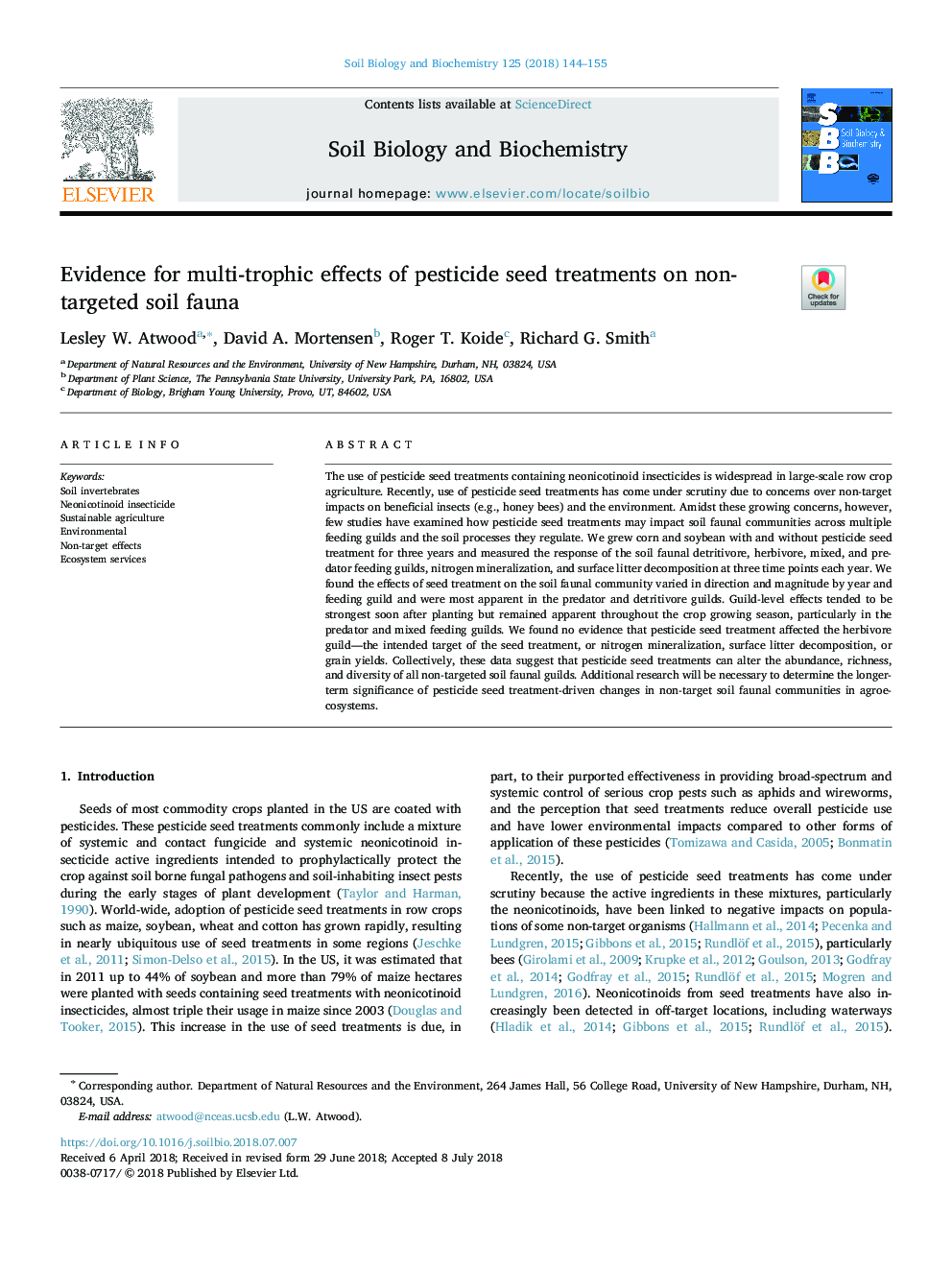| Article ID | Journal | Published Year | Pages | File Type |
|---|---|---|---|---|
| 8362451 | Soil Biology and Biochemistry | 2018 | 12 Pages |
Abstract
The use of pesticide seed treatments containing neonicotinoid insecticides is widespread in large-scale row crop agriculture. Recently, use of pesticide seed treatments has come under scrutiny due to concerns over non-target impacts on beneficial insects (e.g., honey bees) and the environment. Amidst these growing concerns, however, few studies have examined how pesticide seed treatments may impact soil faunal communities across multiple feeding guilds and the soil processes they regulate. We grew corn and soybean with and without pesticide seed treatment for three years and measured the response of the soil faunal detritivore, herbivore, mixed, and predator feeding guilds, nitrogen mineralization, and surface litter decomposition at three time points each year. We found the effects of seed treatment on the soil faunal community varied in direction and magnitude by year and feeding guild and were most apparent in the predator and detritivore guilds. Guild-level effects tended to be strongest soon after planting but remained apparent throughout the crop growing season, particularly in the predator and mixed feeding guilds. We found no evidence that pesticide seed treatment affected the herbivore guild-the intended target of the seed treatment, or nitrogen mineralization, surface litter decomposition, or grain yields. Collectively, these data suggest that pesticide seed treatments can alter the abundance, richness, and diversity of all non-targeted soil faunal guilds. Additional research will be necessary to determine the longer-term significance of pesticide seed treatment-driven changes in non-target soil faunal communities in agroecosystems.
Keywords
Related Topics
Life Sciences
Agricultural and Biological Sciences
Soil Science
Authors
Lesley W. Atwood, David A. Mortensen, Roger T. Koide, Richard G. Smith,
